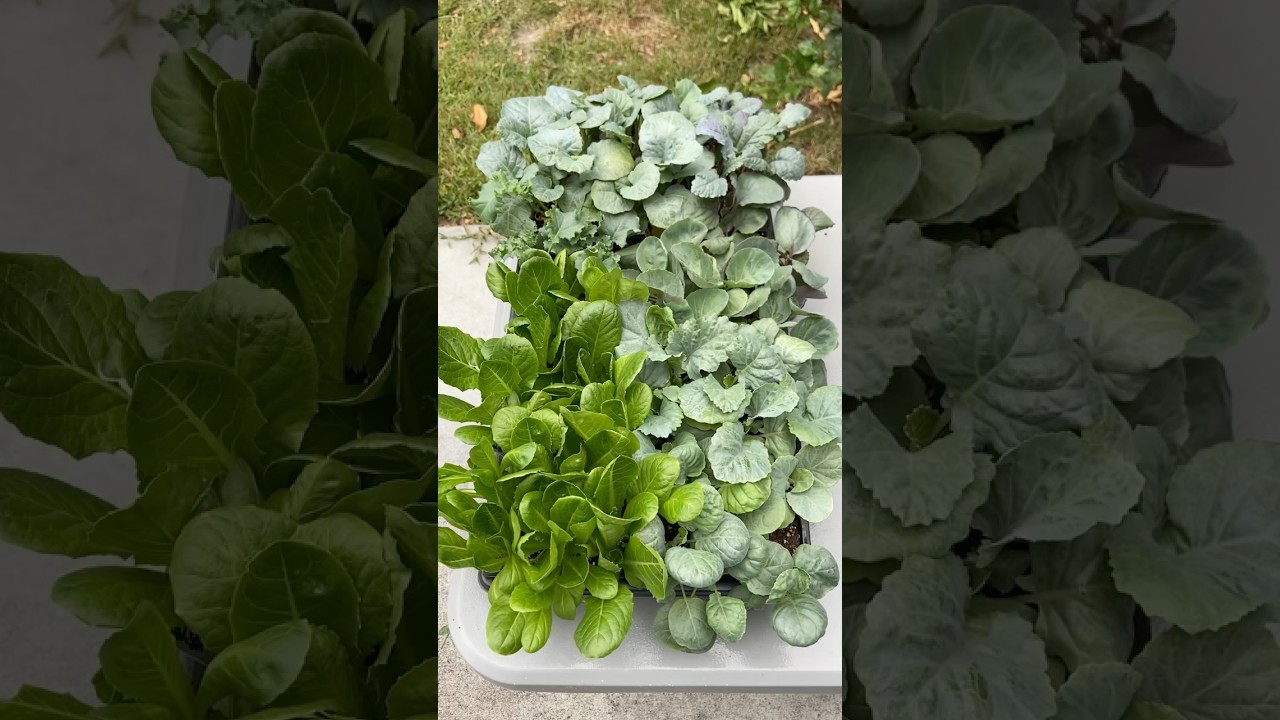Are you about to transplantee and unsure of the best way to ensure success? Avoid this common mistake that could jeopardize your transplant’s survival. By understanding what to steer clear of, you can give your transplants the best chance to thrive and grow.
Introduction
In the bustling jungle that is modern gardening, transplanting is often celebrated as the miraculous moment when a delicate seedling morphs into a thriving plant, ready to take on the world—or at least, your backyard. Yet, just like a first date that spirals into disaster because of one tiny misstep, transplanting can trip up even the most seasoned green thumb. The common mistake that threatens to sabotage your botanical ambitions isn’t buried in overly complex techniques or exotic fertilizers; it’s much simpler—and much more tragic—than that. It’s the little things: neglecting what your transplants truly need or underestimating the importance of preparation. If you’re nodding along, thinking, “Oh no, I might be guilty of this,” then you’re in the right garden bed. Because understanding this mistake could be the difference between a lush, happy garden and a sea of mournful, struggling stems.
This article takes a witty, narrative-driven peek into the art of transplanting, revealing that the real secret isn’t just about digging and planting but about understanding what your precious transplants crave from the moment they leave their nursery cocoon. Whether you’re a rookie wielding garden shears or a seasoned horticulturist, recognizing and avoiding this common pitfall can unlock the path to lush, productive, and thriving plants—and ultimately, a more satisfying green space. So grab your gloves, and let’s dig into what could be the most important lesson you’ll learn about nurturing transplants: the critical mistake that, if left unchecked, could spell doom for your garden ambitions.
The Fatal Flaw: Ignoring the Transplant Shock
Transplant shock glides into your garden like a stealthy thief, silently undermining even the best-laid plans. It’s that unwelcome feeling—plants wilting, turning yellow, their leaves drooping with a sobbing sadness—that makes you question whether you’re a master gardener or just an enthusiastic amateur with a shovel. The trouble begins when you underestimate the delicate dance involved in moving your precious green friends from cozy nursery pots into their new outdoor habitat. Your transplants, though seemingly resilient after a few days of sunshine and water, are actually fragile creatures craving gentle handling and strategic planning.
When you transplant without understanding how to minimize shock, you’re basically sending your plants on a rollercoaster ride through a storm of stress. Roots, that vital lifeline, are often disturbed or damaged in the process, depriving the plant of the ability to absorb nutrients and water effectively. This disturbance can cause the plant’s internal system to go into panic mode, disrupting growth and sometimes, leading to irreparable damage. Many gardeners make the mistake of rushing this process, thinking that a quick placement in the ground will suffice, but nature loves patience and nuance. Transplant shock isn’t just about wilted leaves; it’s about risking the health and longevity of what could have been a bountiful harvest—or a thriving flower bed.
The funny—or tragic—thing is that this mistake is entirely preventable with a little foresight and a touch of garden wisdom. It’s about knowing when to transplant, how to prepare the soil, and, most importantly, how to support your plants through their vulnerable transition. Ignoring the importance of these steps is akin to a bad marriage—confident in your choices but doomed because of neglect and oversight. The good news? Recognizing the signs of shock early and knowing how to mitigate it can turn disaster into delight, giving your plants the fresh start they desperately need.
Why Recognizing the Right Timing Matters More Than You Think
Gardening, much like dating or investing, requires impeccable timing—except here, the stakes are a little higher, and the risks of being early or late are more than just awkward pauses. Transplanting at precisely the right moment isn’t just a matter of expedience; it’s a crucial step in nurturing robust, happy plants. Rushing into the process before the plant has developed strong roots, or waiting too long when the weather turns nippy, can spell trouble faster than you can say “knees muddy.” The right timing for transplanting is an art form—the kind that requires patience, attentiveness, and a little bit of intuition.
Imagine you’re about to uproot a plant on a humid summer afternoon, thinking, “No harm done,” but, in reality, the sun is blazing down and the soil is baked rock-hard. That plant, which should be gently eased into its new arrangment, is instead subjected to a mini desert trek, dehydrated and weakened. Conversely, transplanting during a rainy, overcast spell allows your greenery to settle and establish itself, with less shock and more chance of thriving. The importance of understanding seasonal patterns and weather conditions can’t be overstated; it’s akin to knowing when to make a move in a high-stakes game of chess—timing can turn potential failure into lush success.
Choosing the optimal window also means considering your plant’s specific needs. Some thrive in cooler temperatures, while others crave the warmth of late spring. Nutritious soil, ample water, and protective shading on hot days further sweeten the deal. A little patience here can save you from a counterproductive stint of repeat transplants, which only compounds stress and shock. Recognizing the window of opportunity isn’t just about avoiding disaster; it’s about harnessing nature’s rhythm to give your plants the best shot at a long, fruitful life.
Essential Tools and Techniques to Reduce Transplant Shock
Once you’ve picked the perfect time to say goodbye to your nursery pots, the real work begins—armed with a toolkit of strategies designed to keep your transplants happy and healthy. Good tools are like good friends; they make your job smoother, more enjoyable, and less prone to mishaps. This means having sharp, clean pruners, a trowel, and possibly some root stimulants or organic compost—because nothing says ‘welcome’ like a bit of fertilizer boost wrapped in a shiny, well-handled package. But beyond the tools, mastering the techniques is where true gardeners stand apart from the amateurs.
The first step is to always prepare the new site thoroughly—this isn’t a last-minute affair but a carefully curated environment where your plant can settle and thrive. Loosen the soil, improve drainage if needed, and create a cozy, nutrient-rich bed. When it’s time to gently remove the plant from its nursery container, support the stem carefully and loosen the roots with a gentle wiggle, avoiding the all-too-common mistake of yanking. If roots are circling greedily, a light pruning can encourage healthy growth and prevent root-bound misery from repeating itself. The aim here isn’t just to disturb the roots minimally but to give the plant an encouraging, fresh start.
Adding organic matter or a root stimulator during transplanting is akin to giving your plant a shot of vitality. It’s about elevating survival odds during that vulnerable first week, reinforcing the plant’s resilience. Don’t forget to water thoroughly—yet gently—because a proper soak ensures the roots establish without adding stress or dryness. These simple, almost intuitive techniques can transform what could be a stressful, shock-ridden experience into a confident, even pleasurable, planting adventure. Your transplants don’t need to suffer—armed with the right tools and know-how, you can turn every transplanting session into a success story.
Building a Long-Term Care Strategy for Transplant Success
The moment your plants settle into their new homes isn’t the finish line; it’s merely the start of what could be a beautiful, ongoing relationship. Transplanting is less of a one-and-done event and more of a commitment—a dance of consistent care, observation, and adjustments. A strategic approach to nurturing transplanted plants can turn what initially seems like fragile, transient survival into a thriving garden that blossoms season after season.
This means establishing a routine that includes regular watering—aiming for deep, thorough soakings rather than a quick splash—coupled with mulching to keep moisture in and weeds out. Adjusting your watering schedule based on weather, soil conditions, and plant type isn’t just wise; it’s essential. You want your transplants to feel supported, not stressed by extremes. Fertilization, too, shouldn’t be neglected; a gentle feed of organic nutrients can encourage sturdy root growth and vibrant foliage. Understanding individual plant needs and responding accordingly transforms transient success into long-term prosperity.
Moreover, protecting your transplants from pests and harsh weather conditions is part of the larger picture. Temporary shade during scorching days, or a gentle barrier to discourage nibbling critters, can make all the difference. Keep a watchful eye, too—early detection of trouble, whether disease or decay, allows you to act quickly and nudge your garden toward health before small issues snowball into disaster. As your garden matures, so do your skills—this long-term care approach is what separates fleeting amateurs from seasoned, successful gardeners with a flourishing landscape. The secret? Persistence, patience, and a willingness to adapt as nature’s seasons turn.
Frequently Asked Questions
What are the most common signs of transplant shock, and how can I prevent it?
Transplant shock often manifests as wilting, yellowing leaves, slow growth, or leaf drop. To prevent it, prepare the soil properly, avoid damaging roots during transplantation, and provide adequate water and shade during the plant’s initial days in its new home. Using root stimulants can also help mitigate stress.
How do I choose the best time of year for transplanting different types of plants?
Spring and early fall are generally ideal for most plants because of the moderate temperatures and ample moisture. However, specific plants, like certain vegetables or perennials, may have tailored timing—researching individual needs ensures you hit that sweet spot when your plants are ready to settle in comfortably.
Why is soil preparation so crucial before transplanting?
Soil is the foundation of a healthy plant. Well-prepared soil with proper drainage, sufficient organic matter, and the right pH creates an environment where roots can quickly re-establish, reducing stress and boosting the chances of survival.
What tools are essential for successful transplanting?
A sharp pair of pruning shears, a sturdy trowel, a watering can or hose with a gentle spray, and organic soil amendments are fundamental. Using quality tools not only makes the process easier but also minimizes damage to tender roots and stems.
How long does it typically take for a transplant to recover and start thriving?
Recovery time varies by plant species, size, and growing conditions; most plants start rebounding within a week or two, but it can take several weeks for full vigor to return. Consistent care and patience are your best allies during this period.
Final Thoughts
Transplanting, when done with mindfulness and a dash of patience, is an art that bridges the gap between potential and flourish. It demands that you listen, observe, and adapt—turning a mere gardening task into a joyful act of nurturing life. Recognizing and avoiding the all-too-common mistake of ignoring the delicate nature of transplants can save your garden from unnecessary heartbreak and leave you with a landscape bursting with vitality. Every gardener, novice or veteran, must remember that the true secret lies in understanding that each plant needs more than just space; it needs your trust, your care, and a little bit of patience. So, take action today—dive into your garden with confidence—and watch your transplants not just survive, but thrive in ways you hadn’t imagined.

